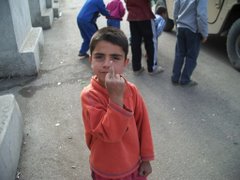To compete in the global information war played out on Web sites and e-mail, soldiers in Iraq should upload videos of their experiences in the combat zone to YouTube and post their personal stories online.
As you have read here – there is a significant counter position to allowing such free reign to Blog sites, video sites and the like within the walls of the Pentagon. General Caldwell has clearly grasped that the digital internet era warrants a relook at the resources we have in soldier Blooging. Therein lies the potential to have a sustainable information warfare counter to the information battle that is being waged across the internet spectrum.
He suggested in the article that unit leaders be given camcorders to document combat operations and daily life. He grasps that there is an importance in being able to immediately access an audience of millions. Noted in the article is the fact that there are MilBloggers out there willing to overcome the red tape imposed by the August 2006 Pentagon memo which forbade personnel from placing any information on public Web sites unless it was reviewed for possible security violations and approved for distribution by commanders.
I have noted here previously that it is a struggle to overcome bureaucratic reluctance to allow blogging within the military establishment. The resistance extends event to retiredreservist at times as a result of the Pentagon restrictions. These restrictions quantified in the current rules are subjective to to a wide range of interpretation. Within the milblogging community this may be translated to absolute censorship or open latitude for bloggers. The restriction on using military computers (often the only machines available in theater) further suppresses the good message from our soldiers in the field.
General Caldwell has got it right with regard to the need to relook the current policy and improve our counter message to that of the enemy. We must realize that our soldiers come from a great cross section of the country they serve and as a result are best positioned to influence the masses on notion that we are doing good work.




